Search Result
Results for "
Inducible nitric oxide synthase
" in MedChemExpress (MCE) Product Catalog:
| Cat. No. |
Product Name |
Target |
Research Areas |
Chemical Structure |
-
- HY-12124
-
|
|
NO Synthase
|
Cardiovascular Disease
|
|
BBS-4 is a potent and selective inducible nitric oxide synthase (NOS2) dimerization inhibitor, with an IC50 of 0.49 nM. BBS-4 can protect mice from the cardiovascular dysfunction of sepsis .
|
-
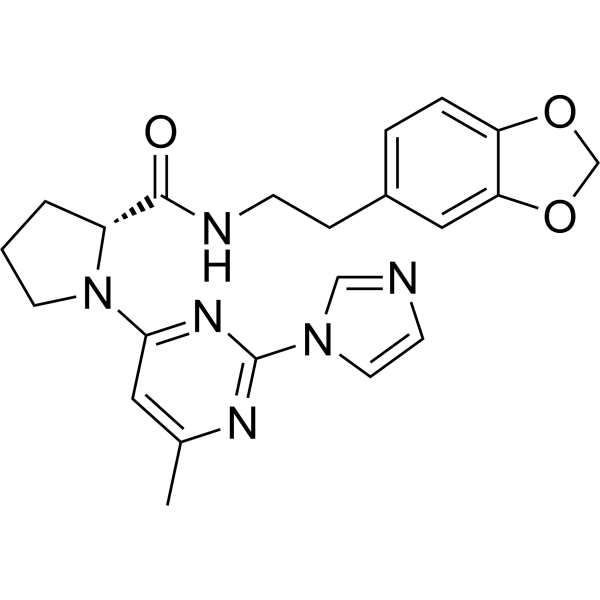
-
- HY-101175
-
|
|
|
|
|
3-Bromo-7-nitroindazole is a more potent and selective inhibitor of neuronal nitric oxide synthase (nNOS) than eNOS or inducible nitric oxide synthase (iNOS). 3-Bromo-7-nitroindazole affects the intercellular messenger nitric oxide (NO) synthesis throughout the body and brain .
|
-
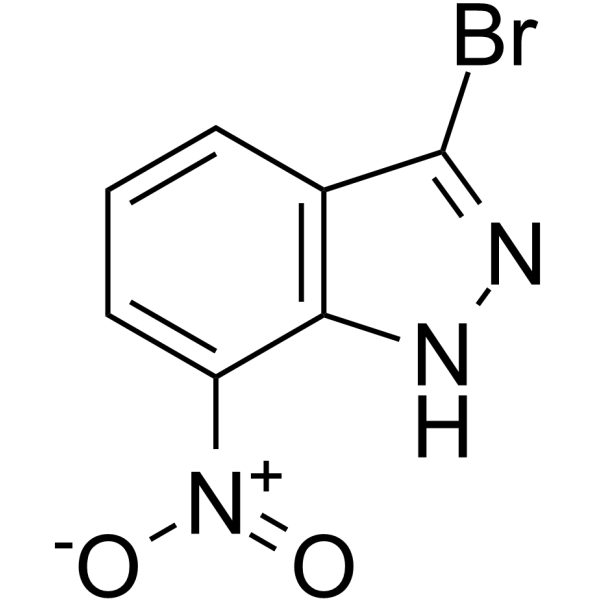
-
- HY-146309
-
|
|
NO Synthase
|
Inflammation/Immunology
|
|
iNOS-IN-2 (Compound 53) is a potent down-regulator of inducible nitric oxide synthase (iNOS) protein. iNOS-IN-2 effectively inhibits the NO production (IC50=6.4 μM). iNOS-IN-2 has a potential therapeutic effect on chronic inflammation .
|
-
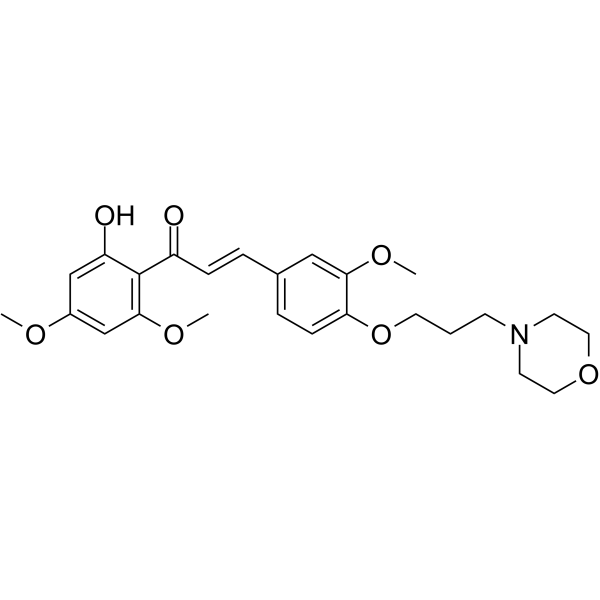
-
- HY-118160
-
|
NSC 73233
|
NO Synthase
|
Inflammation/Immunology
Cancer
|
|
PPM-18 (NSC 73233), a potent anti-inflammatory agent, inhibits nitric oxide synthase expression. PPM-18 is a potent inhibitor of iNOS expression by blocking the binding of NF-κB to promoter . PPM-18, an analog of Vitamin K, induces autophagy and apoptosis in bladder cancer cells through ROS and AMPK signaling pathways .
|
-

-
- HY-115744
-
|
|
NO Synthase
|
Inflammation/Immunology
|
|
Mercaptoethylguanidine (MEG) dihydrobromide is selective inhibitor of the inducible nitric oxide synthase and peroxynitrite scavenger. Mercaptoethylguanidine (MEG) dihydrobromide has the potential for inflammatory bowel diseases research.
|
-

-
- HY-133098
-
|
|
NO Synthase
|
Inflammation/Immunology
|
|
Juncutol is a potent inducible nitric oxide synthase (iNOS) inhibitor. Juncutol decreases the LPS (HY-D1056)-stimulated iNOS protein expression .
|
-
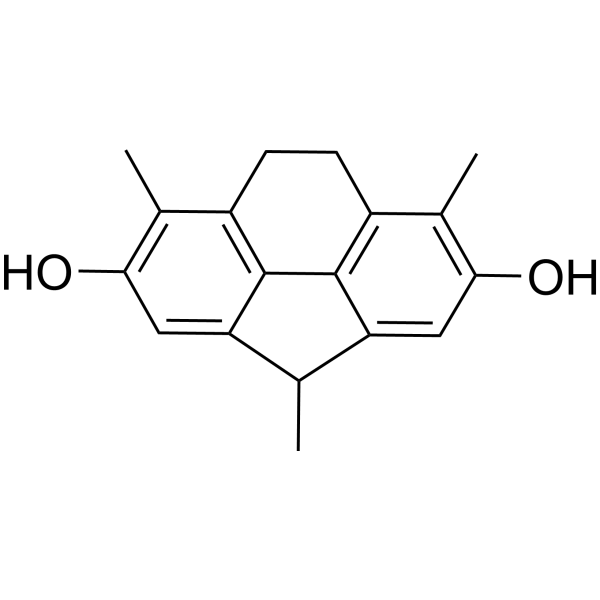
-
- HY-N6770
-
|
(S)-Curvularin
|
NO Synthase
|
Infection
Inflammation/Immunology
|
|
Curvularin, a fungal metabolite and a potent mycotoxin naturally isolated from Curvularia lunata, inhibits cytokine-induced nitric oxide synthase (iNOS), with an IC50 of 9.5 µM .
|
-
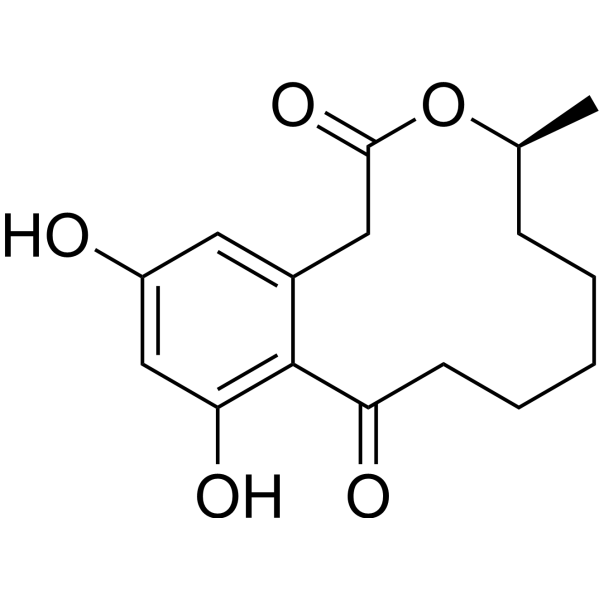
-
- HY-N1382
-
|
|
|
|
|
Asperuloside is an iridoid isolated from Hedyotis diffusa, with anti-inflammatory activity. Asperuloside inhibits inducible nitric oxide synthase (iNOS), suppresses NF-κB and MAPK signaling pathways .
|
-
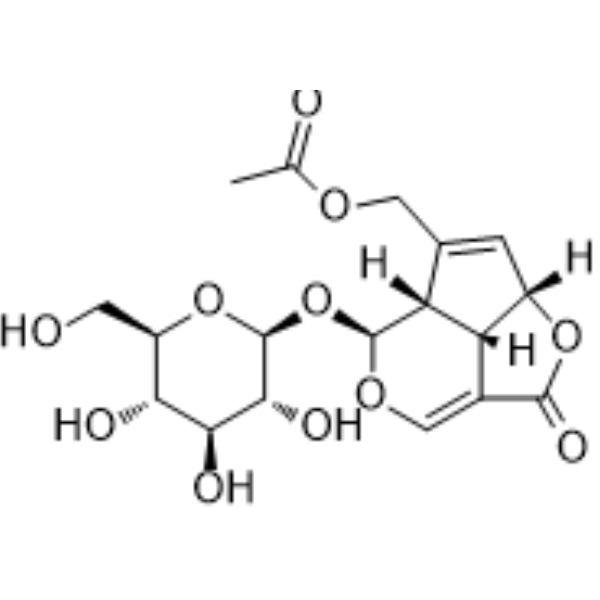
-
- HY-79457
-
|
|
NO Synthase
HSV
|
Infection
Inflammation/Immunology
|
|
S-Methylisothiourea sulfate is a potent, selective and competitive inhibitor of inducible nitric oxide synthase (iNOS). S-Methylisothiourea sulfate exerts beneficial effects in rodent models of septic shock .
|
-

-
- HY-N0455
-
|
(S)-(+)-Arginine
|
NO Synthase
Endogenous Metabolite
|
Cardiovascular Disease
Cancer
|
|
L-Arginine ((S)-(+)-Arginine) is the substrate for the endothelial nitric oxide synthase (eNOS) to generate NO. L-Arginine is transported into vascular smooth muscle cells by the cationic amino acid transporter family of proteins where it is metabolized to nitric oxide (NO), polyamines, or L-proline. L-Arginine is a potent vasodilator, and can be used to induce experimental acute pancreatitis .
|
-
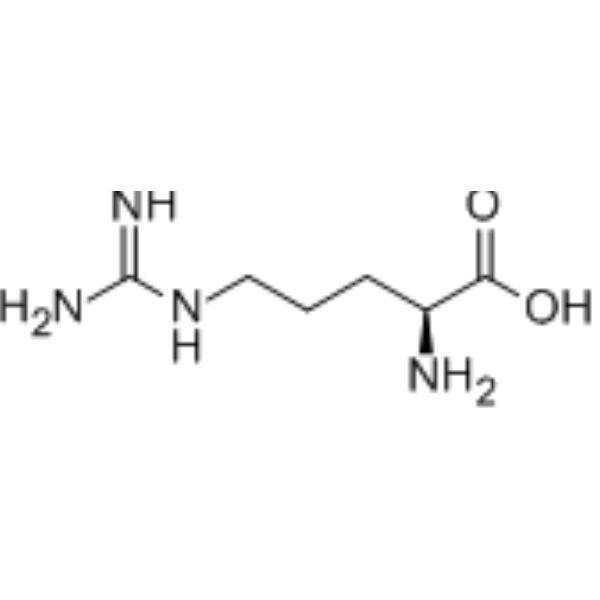
-
- HY-N0455A
-
|
(S)-(+)-Arginine hydrochloride
|
NO Synthase
Endogenous Metabolite
|
Cancer
|
|
L-Arginine ((S)-(+)-Arginine) is the substrate for the endothelial nitric oxide synthase (eNOS) to generate NO. L-Arginine is transported into vascular smooth muscle cells by the cationic amino acid transporter family of proteins where it is metabolized to nitric oxide (NO), polyamines, or L-proline. L-Arginine is a potent vasodilator, and can be used to induce experimental acute pancreatitis .
|
-
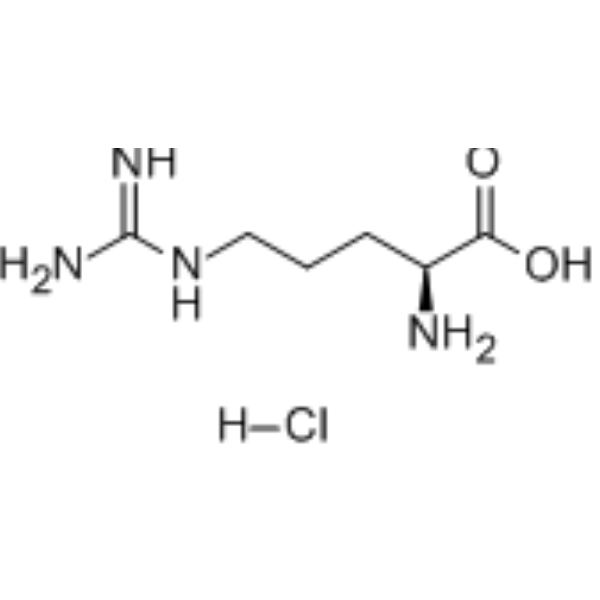
-
- HY-N0268
-
|
|
NO Synthase
|
Inflammation/Immunology
|
|
Irisflorentin, a naturally occurring isoflavone, is an abundant active constituent in Belamcanda chinensis. Irisflorentin markedly reduces the transcriptional and translational levels of inducible nitric oxide synthase (iNOS) as well as the production of NO. Anti-inflammatory activity .
|
-
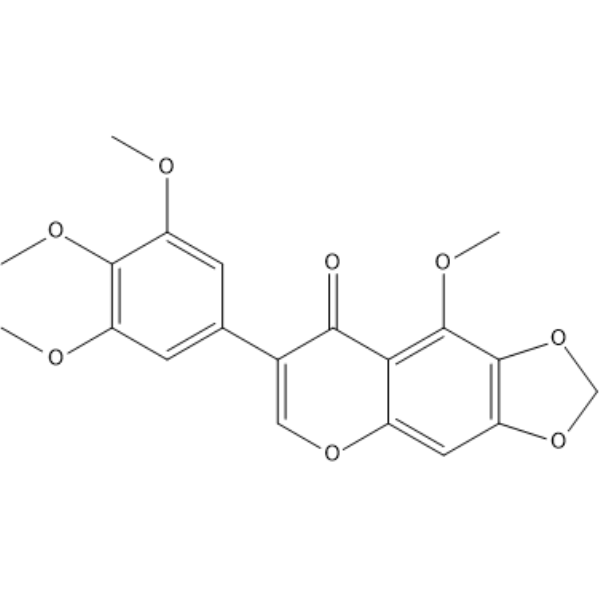
-
- HY-107584
-
|
|
Others
|
Metabolic Disease
|
|
BYK 191023 is a highly selective inducible nitric-oxide synthase (iNOS) inhibitor. BYK 191023 interacts with the catalytic center of the enzyme. BYK 191023 can be used to study the in vivo and in vitro effects mediated by iNOS .
|
-
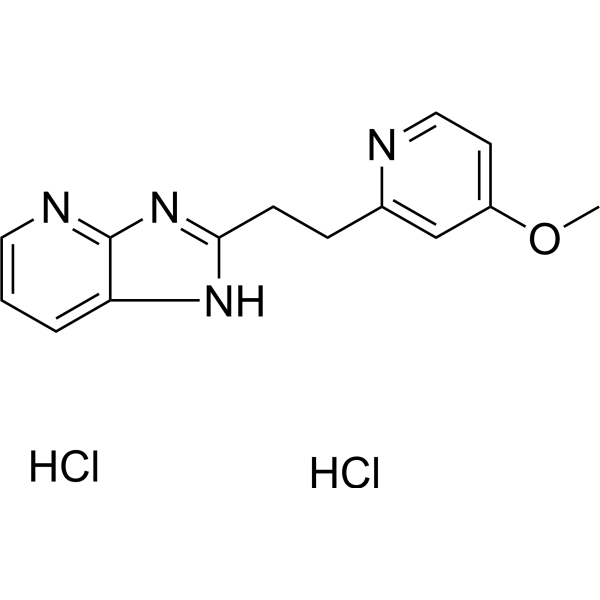
-
- HY-136341
-
-
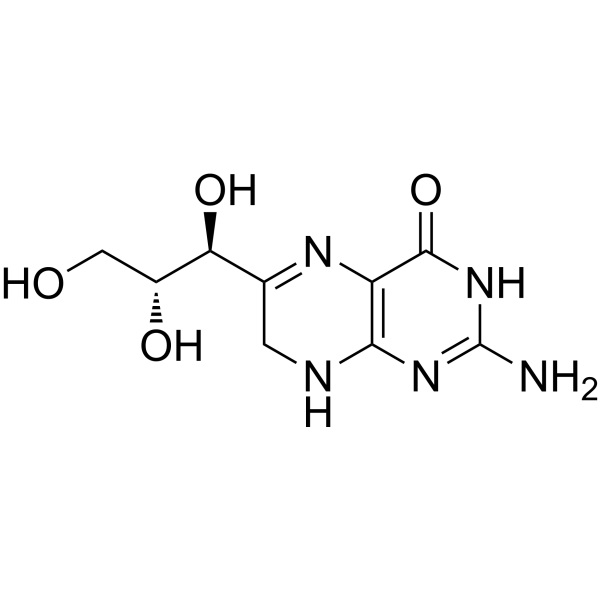
-
- HY-161255
-
|
|
NO Synthase
|
Inflammation/Immunology
|
|
3,4-DAA is an orally active Anthranilic acid derivative with potent immunosuppressive activities. 3, 4-DAA can alleviate the severity of colitis through inhibiting Th1 cells response, promoting Th2 cytokines expression and inducing CD4 +CD25 + T cells expression . 3,4-DAA suppressed expression of inducible nitric oxide synthase (iNOS) and nitric oxide (NO) release from EOC20 cells induced by IFN-γ and Lipopolysaccharide .
|
-

-
- HY-N6893
-
|
|
NF-κB
|
Inflammation/Immunology
|
|
Ergolide is a sesquiterpene lactone isolated from the dried flowers of Inula Britannica. Ergolide inhibits inducible nitric oxide synthase and cyclo-oxygenase-2 expression in RAW 264.7 macrophages through the inactivation of NF-κB .
|
-
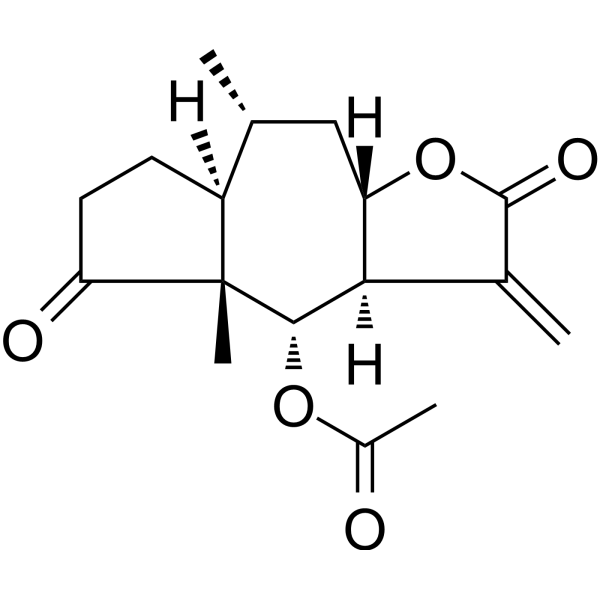
-
- HY-12122A
-
|
|
NO Synthase
|
Neurological Disease
Inflammation/Immunology
|
|
AR-C102222 hydrochloride is a potent, competitive, orally active and highly selective inducible nitric oxide synthase (iNOS) inhibitor, with an IC50 of 37 nM . AR-C102222 hydrochloride has antinociception and anti-inflammatory activities .
|
-

-
- HY-N8444
-
|
|
Interleukin Related
|
Cardiovascular Disease
|
|
Triptoquinone A, an interleukin 1 inhibitor, inhibits endomycin (LPS) or interleukin (IL-1β)-promoted induction of nitric oxide synthase (NOS) in vascular smooth muscle, thereby inhibiting Arg-induced vascular relaxation .
|
-
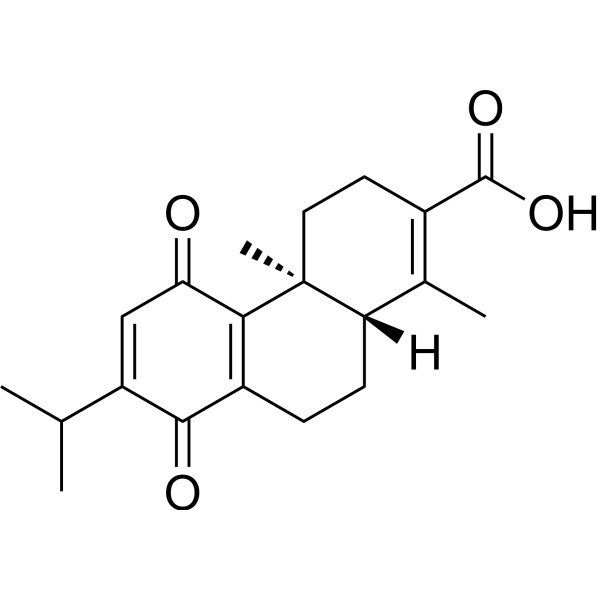
-
- HY-110275
-
|
|
Keap1-Nrf2
|
Others
|
|
RA839 is a noncovalent small molecule binder to Keap1 with a Kd of ∼6 μM and selective activator of Nrf2 signaling. RA839 prevents the induction of both inducible nitric-oxide synthase expression and nitric oxide release in response to lipopolysaccharides in macrophages. RA839 is a selective inhibitor of the Keap1/Nrf2 interaction and a useful tool compound to study the biology of Nrf2 .
|
-
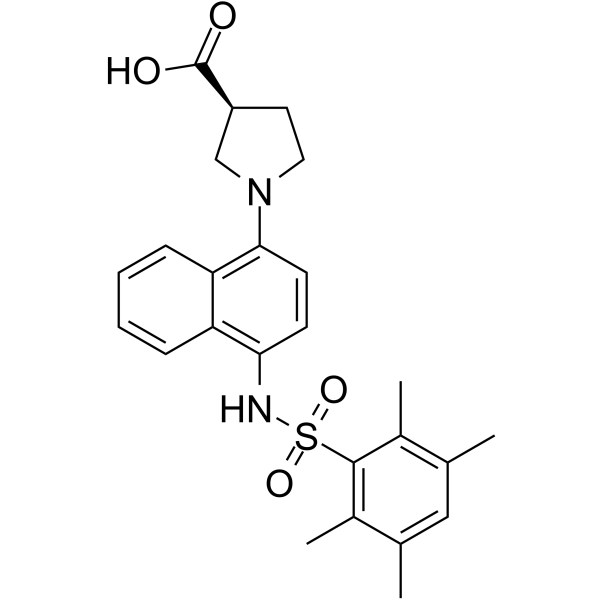
-
- HY-N11085
-
|
|
NO Synthase
IKK
|
Inflammation/Immunology
|
|
Isophysalin A is a physalin with alpha and beta unsaturated ketone components. Isophysalin A binds to GSH and targets multiple cysteine residues on IKKβ. Isophysalin A also inhibits inducible NO synthase (iNOS) and nitric oxide (NO) production, showing anti-inflammatory activity .
|
-

-
- HY-145846
-
|
|
NO Synthase
Interleukin Related
|
Inflammation/Immunology
|
|
iNOs-IN-1 (YPW) is a potent inducible nitric oxide synthase (iNOS) inhibitor. iNOs-IN-1 can significantly inhibit the expression of IL-6 and iNOS, as well as reduce LPS-induced NO generation with dose-dependent manner in mouse macrophages. Anti-inflammatory effects .
|
-

-
- HY-119720
-
|
|
NF-κB
NO Synthase
|
Inflammation/Immunology
|
|
Neocryptotanshinone, a fatty diterpenoids from Salvia Miltiorrhiza, inhibits lipopolysaccharide-induced inflammation by suppression of NF-κB and iNOS signaling pathways .
|
-
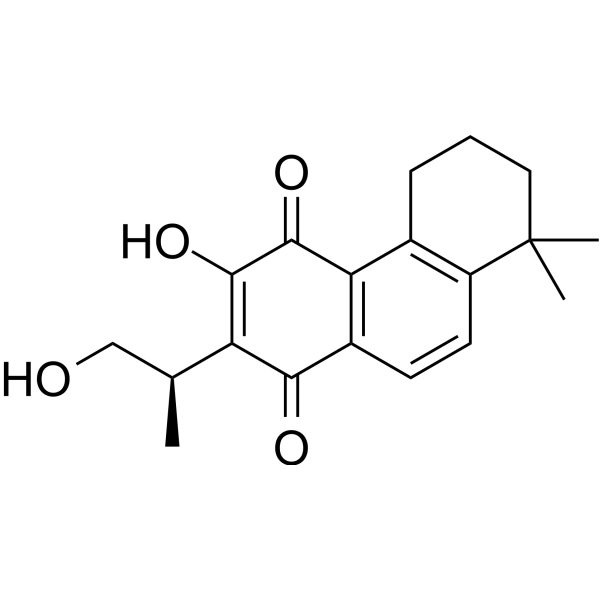
-
- HY-135224
-
|
1,4-PB-ITU dihydrobromide
|
NO Synthase
|
Cancer
|
|
1,4-PBIT (1,4-PB-ITU) dihydrobromide (compound 46) is a potent nitric oxide synthases (NOS) inhibitor, with Ki values of 7.6 nM, 360 nM, and 16 nM for the inducible (iNOS), endothelial (eNOS), and neuronal (nNOS) isozymes, respectively .
|
-
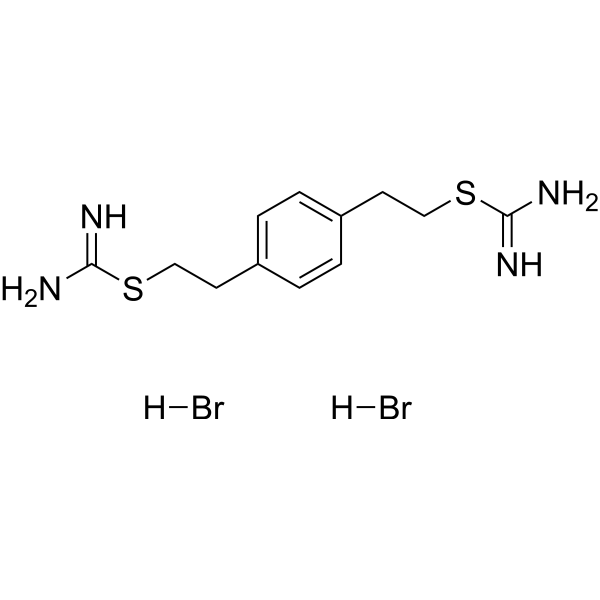
-
- HY-100986
-
|
|
NO Synthase
|
Cardiovascular Disease
|
|
L-NIO dihydrochloride is a potent, non-selective and NADPH-dependent nitric oxide synthase (NOS) inhibitor, with Kis of 1.7, 3.9, 3.9 μM for neuronal (nNOS), endothelial (eNOS), and inducible (iNOS), respectively . L-NIO dihydrochloride induces a consistentfocal ischemic infarctin rats .
|
-
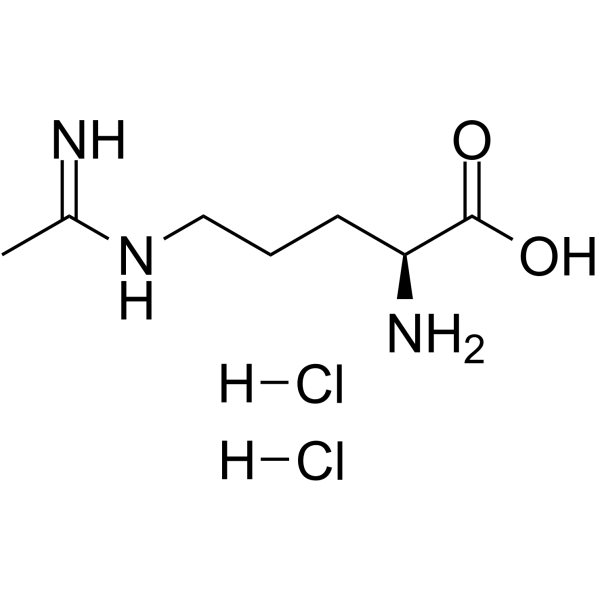
-
- HY-100986B
-
|
|
NO Synthase
|
Cardiovascular Disease
|
|
L-NIO is a potent, non-selective and NADPH-dependent nitric oxide synthase (NOS) inhibitor, with Kis of 1.7, 3.9, 3.9 μM for neuronal (nNOS), endothelial (eNOS), and inducible (iNOS), respectively . L-NIO induces a consistentfocal ischemic infarctin rats .
|
-
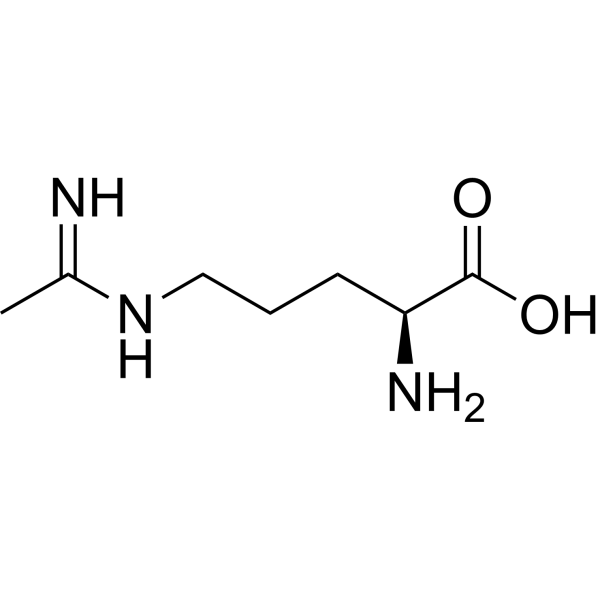
-
- HY-B1041
-
|
Pimagedine hydrochloride; GER-11; Aminoguanidinium chloride
|
NO Synthase
Apoptosis
|
Endocrinology
|
|
Aminoguanidine hydrochloride (Pimagedine hydrochloride) is an inhibitor of diamine oxidase and nitric oxide synthase. Aminoguanidine hydrochloride has a dose-dependent inhibitory effect on apoptosis induced by Doxorubicin (HY-15142). Aminoguanidine hydrochloride has antioxidant properties. Aminoguanidine hydrochloride can be used in diabetic nephropathy research .
|
-
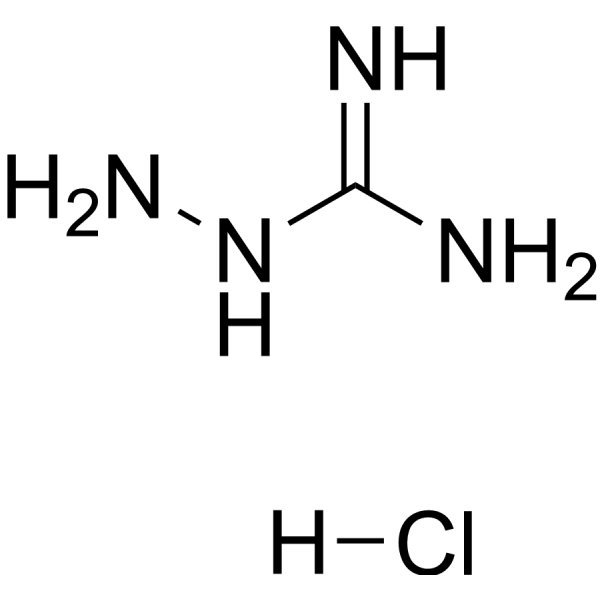
-
- HY-124996
-
|
|
NO Synthase
|
Neurological Disease
Inflammation/Immunology
Cancer
|
|
(Rac)-ZLc-002, an inhibitor of nNOS interaction with nitric oxide synthase 1 adaptor protein (NOS1AP), suppresses inflammatory nociception and chemotherapy-induced neuropathic pain and synergizes with Paclitaxel (HY-B0015) to reduce tumor cell viability .
|
-
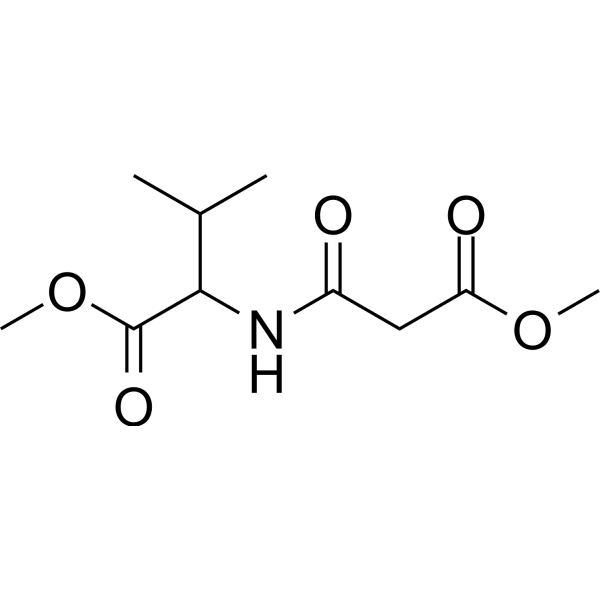
-
- HY-18730
-
|
W1400
|
|
|
|
1400W is a slow, tight binding, and highly selective inducible nitric-oxide synthase (iNOS) inhibitor, with a Kd value ≤ 7 nM. 1400W inhibits iNOS induction in microglial cells, and reduces generation of NO, thereby mitigating oxidative stress and neuronal cell apoptosis in the rat cerebral cortex, and improving the spatial memory dysfunction caused by acute hypobaric hypoxia-reoxygenation .
|
-
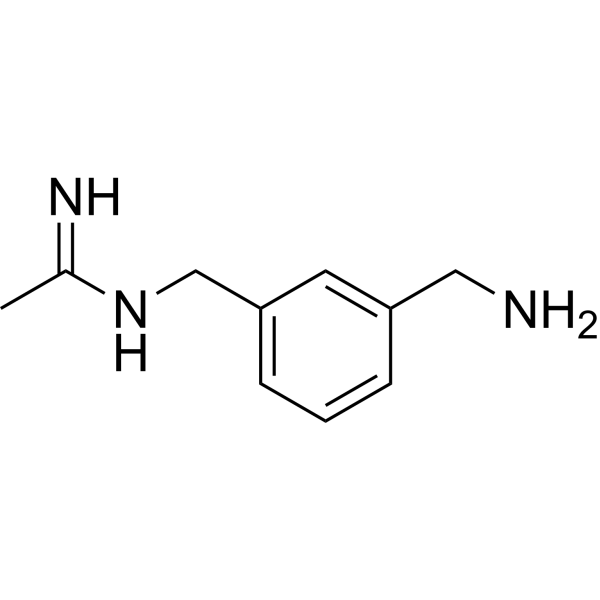
-
- HY-150055
-
|
|
NO Synthase
|
Inflammation/Immunology
|
|
iNOs-IN-3 (Compound 2d) is an orally active nitric oxide synthase (iNOS) inhibitor (IC50=3.342 µM). iNOs-IN-3 shows anti-inflammatory activity and can be used in LPS-induced acute lung injury (ALI) research .
|
-
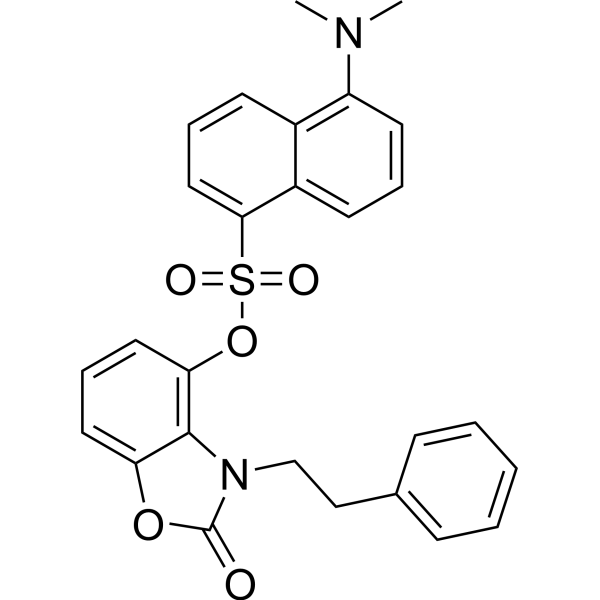
-
- HY-N6966
-
|
|
NF-κB
NO Synthase
COX
PGE synthase
|
Inflammation/Immunology
Cancer
|
|
Ethyl Caffeate is a natural phenolic compound isolated from Bidens pilosa. Ethyl caffeate suppresses NF-κB activation and its downstream inflammatory mediators, inducible nitric oxide synthase (iNOS), cyclooxygenase-2 (COX-2), and prostaglandin E2 (PGE2) in vitro or in mouse skin .
|
-
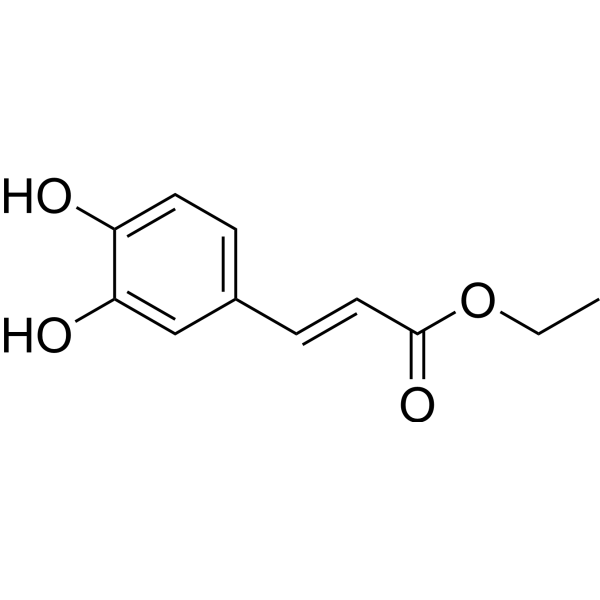
-
- HY-156241
-
|
|
NO Synthase
Fungal
|
Infection
Inflammation/Immunology
|
|
Meliadubin B is a natural triterpenoid with significant inflammatory inhibition effect toward superoxide anion generation in human neutrophils (EC50 of 5.54 μM). Meliadubin B inhibits inducible nitric oxide synthase. Meliadubin B shows remarkable inhibition against the rice pathogenic fungus Magnaporthe oryzae with IC50 of 182.50 μM.
|
-
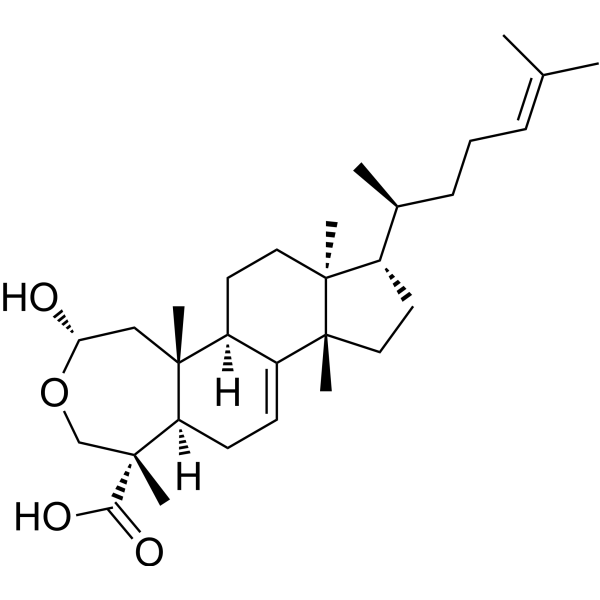
-
- HY-18731
-
|
|
NO Synthase
Apoptosis
|
Cardiovascular Disease
Inflammation/Immunology
Cancer
|
|
1400W dihydrochloride is the dihydrochloride form of 1400W (HY-18731). 1400W is a slow, tight binding, and highly selective inducible nitric-oxide synthase (iNOS) inhibitor, with a Kd value ≤ 7 nM. 1400W inhibits iNOS induction in microglial cells, and reduces generation of NO, thereby mitigating oxidative stress and neuronal cell apoptosis in the rat cerebral cortex, and improving the spatial memory dysfunction caused by acute hypobaric hypoxia-reoxygenation .
|
-

-
- HY-N7012
-
|
5-Hydroxy-3',4',7-trimethoxyflavone
|
TNF Receptor
Interleukin Related
COX
|
Inflammation/Immunology
|
|
7,3',4'-Tri-O-methylluteolin (5-Hydroxy-3',4',7-trimethoxyflavone), a flavonoid compound, possesses potent anti-inflammatory effects in LPS-induced macrophage cell line mediated by inhibition of release of inflammatory mediators, NO, PGE2, and pro-inflammatory cytokines. 7,3',4'-Tri-O-methylluteolin significantly induces reduction in the mRNA expressions of inducible nitric oxide synthase and cyclooxygenase-2 .
|
-
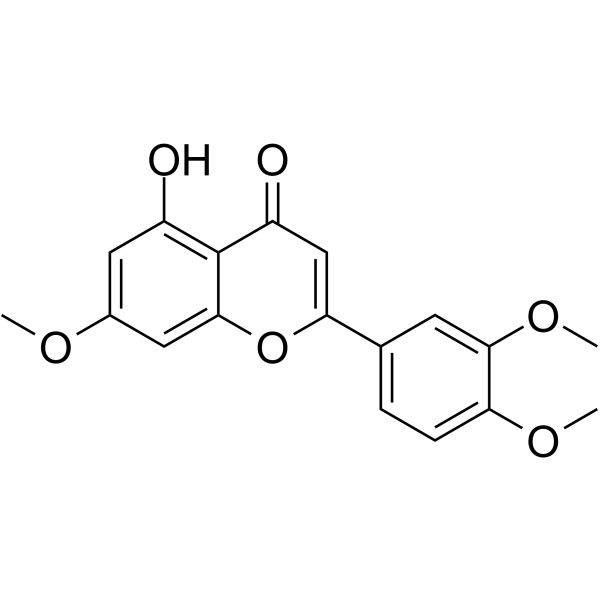
-
- HY-118700
-
|
Guanidinobiotin
|
NO Synthase
|
Neurological Disease
|
|
2-Iminobiotin (Guanidinobiotin) is a biotin (vitamin H or B7) analog. 2-Iminobiotin is a reversible nitric oxide synthases inhibitor with Kis of 21.8 and 37.5μM for murine iNOS and rat n-cNOS, respectively . 2-Iminobiotin superimposes on hypothermia protects human neuronal cells from hypoxia-induced cell damage .
|
-

-
- HY-146765
-
|
|
NOD-like Receptor (NLR)
|
Neurological Disease
Inflammation/Immunology
|
|
AMS-17 is a potent NLRP3 inhibitor, inhibiting microglia activation in vitro and in vivo. AMS-17 also inhibits cytokines such as caspase-1, TNF-α, IL-1β and inducible nitric oxide synthase (iNOS) in N9 cells. AMS-17 can be used for researching inflammation-associated neurological disorders .
|
-

-
- HY-17408
-
-

-
- HY-N11996
-
|
|
NO Synthase
NF-κB
|
Others
|
|
Aloenin aglycone (compound 13) is an NF-κB inhibitor that can be isolated from aloe exudate. Aloenin aglycone inhibits TNFα-induced NF-κB transcriptional activity (IC50: 18.7 μM). Aloenin aglycone (10 μM) also reduced inducible nitric oxide synthase (iNOS) and intercellular adhesion molecule 1 (ICAM-1) gene expression after treatment of HepG2 cells with 10 ng/mL TNFα .
|
-
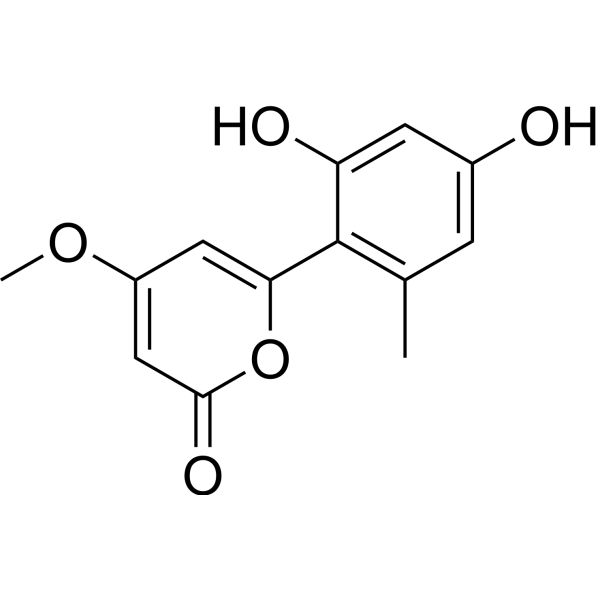
-
- HY-118700A
-
|
Guanidinobiotin hydrobromide
|
NO Synthase
|
Neurological Disease
|
|
2-Iminobiotin hydrobromide (Guanidinobiotin hydrobromide) is a biotin (vitamin H or B7) analog. 2-Iminobiotin hydrobromide is a reversible nitric oxide synthases inhibitor with Kis of 21.8 and 37.5 μM for murine iNOS and rat n-cNOS, respectively . 2-Iminobiotin hydrobromide superimposes on hypothermia protects human neuronal cells from hypoxia-induced cell damage .
|
-
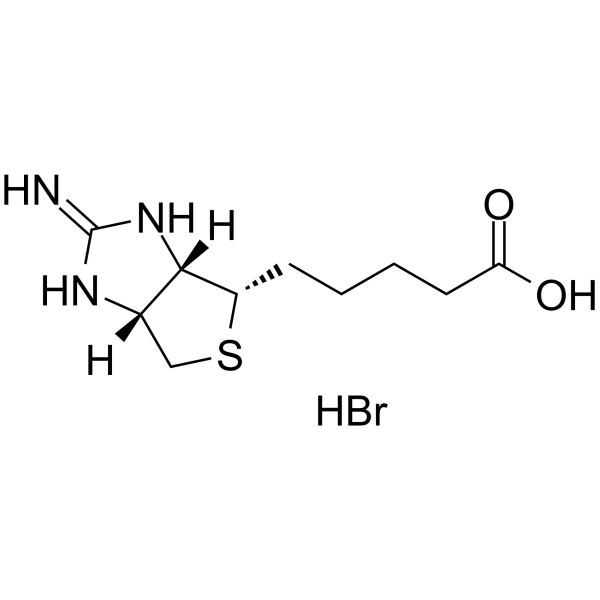
-
- HY-N6966A
-
|
|
Others
|
Inflammation/Immunology
|
|
Ethyl trans-caffeate is the trans form of Ethyl Caffeate (HY-N6966). Ethyl Caffeate is a natural phenolic compound isolated from Bidens pilosa. Ethyl caffeate suppresses NF-κB activation and its downstream inflammatory mediators, inducible nitric oxide synthase (iNOS), cyclooxygenase-2 (COX-2), and prostaglandin E2 (PGE2) in vitro or in mouse skin .
|
-
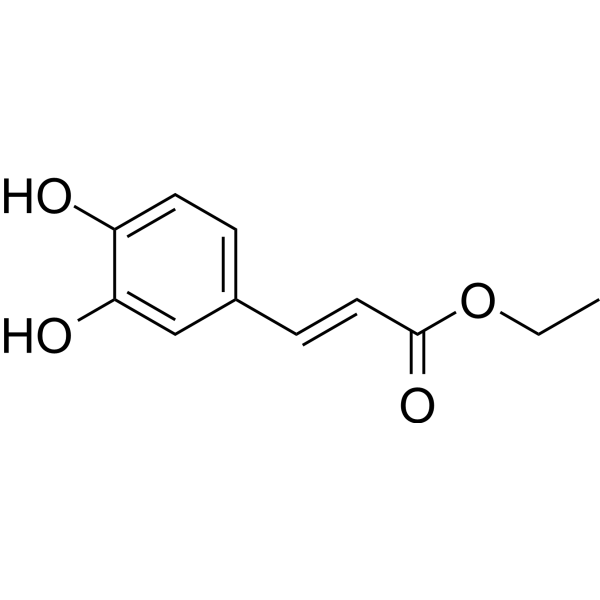
-
- HY-N1445
-
|
Quercetin 3-glucoside
|
|
|
|
Isoquercetin (Quercetin 3-glucoside) is a naturally occurring polyphenol that has antioxidant, anti-proliferative, and anti-inflammatory properties. Isoquercetin alleviates ethanol-induced hepatotoxicity, oxidative stress, and inflammatory responses via the Nrf2/ARE antioxidant signaling pathway . Isoquercetin regulates the expression of nitric oxide synthase 2 (NO2) via modulating the nuclear factor-κB (NF-κB) transcription regulation system. Isoquercetin has high bioavailability and low toxicity, is a promising candidate agent to prevent birth defects in diabetic pregnancies .
|
-
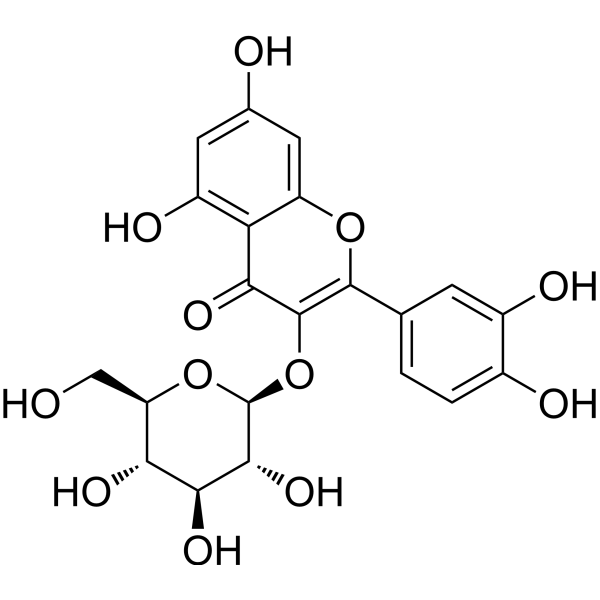
-
- HY-112234
-
|
Sepiapterin
|
Endogenous Metabolite
|
Cancer
|
|
L-Sepiapterin (Sepiapterin) is a precursor of the endothelial nitric oxide synthase (eNOS) cofactor tetrahydrobiopterin (BH4). L-Sepiapterin improves endothelial dysfunction in small mesenteric arteries from db/db mice, and induces angiogenesis. L-Sepiapterin inhibits cell proliferation and migration of ovarian cancer cells via down-regulation of p70 S6K-dependent VEGFR-2 expression .
|
-

-
- HY-125863
-
|
|
Endogenous Metabolite
|
Metabolic Disease
Cancer
|
|
Glucose-6-phosphate dehydrogenase, Microorganism is the rate-limiting enzyme of the pentose phosphate pathway. Glucose-6-phosphate dehydrogenase is a major source of NADPH that is required by many essential cellular systems including the antioxidant pathways, nitric oxide synthase, NADPH oxidase, cytochrome p450 system, and others. Glucose-6-phosphate dehydrogenase can be used for the research of diabetes, aldosterone-induced endothelial dysfunction, and cancer .
|
-
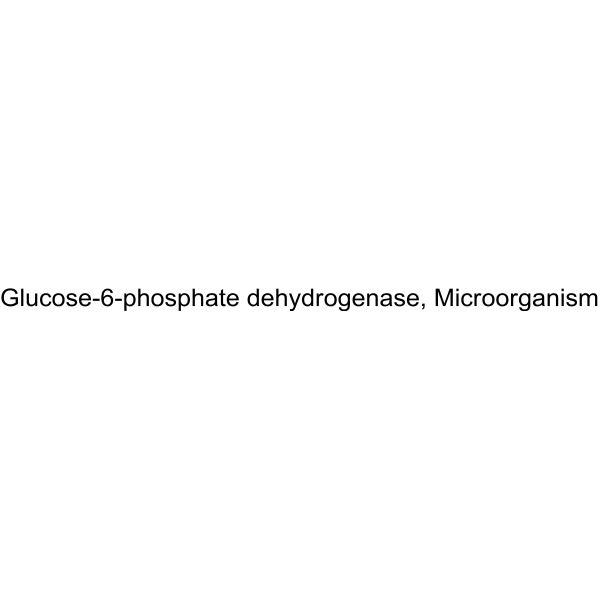
-
- HY-12119
-
|
|
NO Synthase
|
Neurological Disease
Inflammation/Immunology
|
|
GW274150 is a potent, selective, orally active and NADPH-dependent inhibitor of human inducible nitric oxide synthase (iNOS) (IC50=2.19 μM; Kd=40 nM) and rat iNOS (ED50=1.15 μM). GW274150 also displays less potency for both humans or rats endothelial NOS (eNOS) and neuronal NOS (nNOS). GW274150 exerts a protective role in an acute model of lung injury inflammation .
|
-
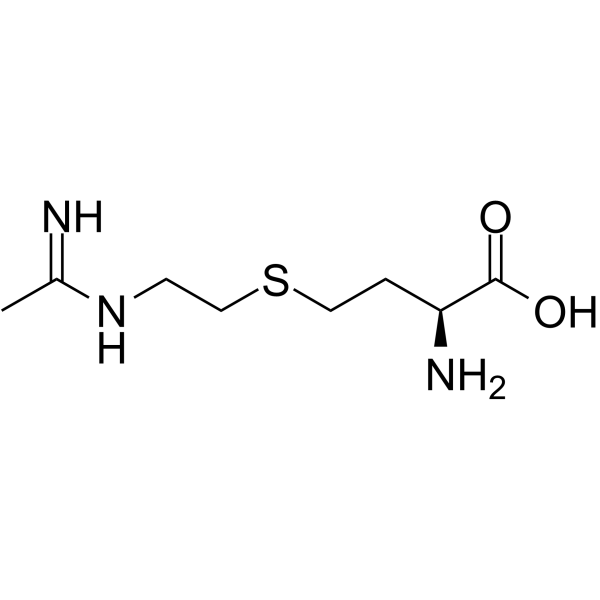
-
- HY-12119A
-
|
|
NO Synthase
|
Neurological Disease
Inflammation/Immunology
|
|
GW274150 phosphate is a potent, selective, orally active and NADPH-dependent inhibitor of human inducible nitric oxide synthase (iNOS) (IC50=2.19 μM; Kd=40 nM) and rat iNOS (ED50=1.15 μM). GW274150 phosphate displays less potency for both humans or rats endothelial NOS (eNOS) and neuronal NOS (nNOS). GW274150 phosphate exerts a protective role in an acute model of lung injury inflammation .
|
-

-
- HY-12119B
-
|
|
NO Synthase
|
Neurological Disease
Inflammation/Immunology
|
|
GW274150 (dihydrochloride) is a potent, selective, orally active and NADPH-dependent inhibitor of human inducible nitric oxide synthase (iNOS) (IC50=2.19 μM; Kd=40 nM) and rat iNOS (ED50=1.15 μM). GW274150 (dihydrochloride) displays less potency for both humans or rats endothelial NOS (eNOS) and neuronal NOS (nNOS). GW274150 (dihydrochloride) exerts a protective role in an acute model of lung injury inflammation .
|
-
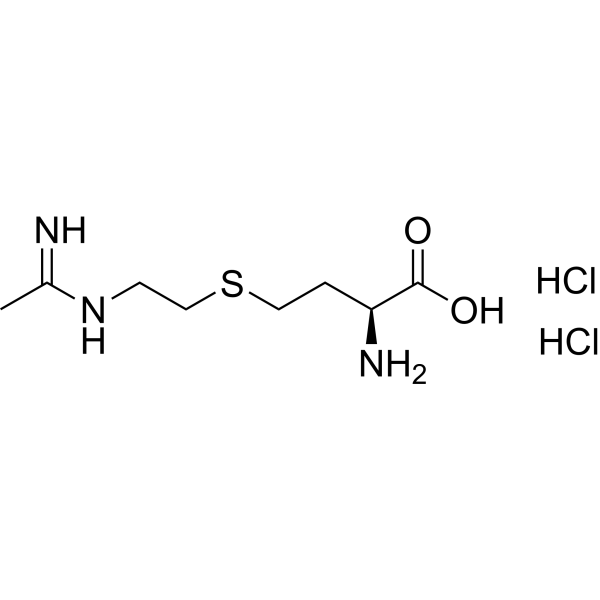
-
- HY-17408R
-
|
Compactin(Standard); ML236B (Standard)
|
HMG-CoA Reductase (HMGCR)
Bacterial
Autophagy
Apoptosis
Antibiotic
|
Infection
Cardiovascular Disease
Neurological Disease
Metabolic Disease
Cancer
|
|
Mevastatin (Standard) is the analytical standard of Mevastatin. This product is intended for research and analytical applications. Mevastatin (Compactin) is a first HMG-CoA reductase inhibitor that belongs to the statins class. Mevastatin is a lipid-lowering agent, and induces apoptosis, arrests cancer cells in G0/G1 phase. Mevastatin also increases endothelial nitric oxide synthase (eNOS) mRNA and protein levels. Mevastatin has antitumor activity and has the potential for cardiovascular diseases treatment .
|
-
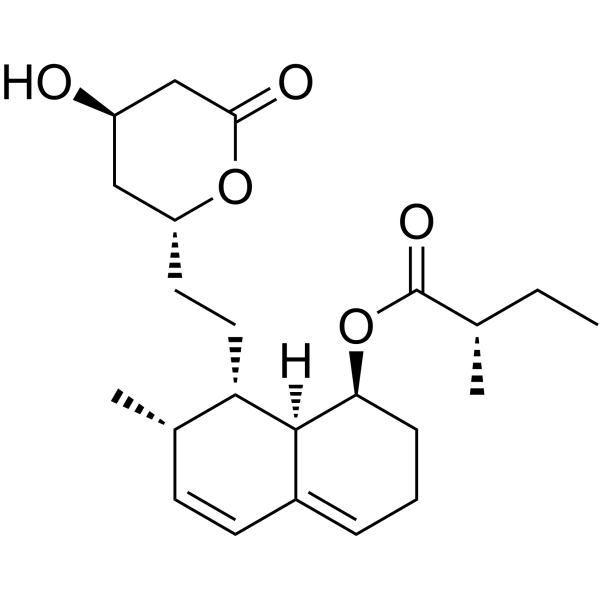
-
- HY-N0617
-
|
|
Phosphatase
ERK
NF-κB
Apoptosis
|
Cardiovascular Disease
Inflammation/Immunology
Cancer
|
|
Sanggenon C, a flavonoid, exerts protective effects against cardiac hypertrophy and fibrosis via suppression of the calcineurin/NFAT2 pathway. Sanggenon C inhibits mitochondrial fission to induce apoptosis by blocking the ERK signaling pathway. Sanggenon C inhibits inducible nitric oxide synthase expression in RAW264.7 cells, and TNF-α-stimulated cell adhesion and VCAM-1 expression, by suppressing NF-κB activity. Sanggenon C possesses antioxidant, anti-inflammatory and antitumor activities .
|
-

-
- HY-N8936
-
|
|
Others
|
Inflammation/Immunology
|
|
Narchinol B (Compound 4) is a sesquiter penoid
compound. Narchinol B has anti-inflammatory effects. Narchinol B works by
inhibiting proinflammatory mediators, including prostaglandin E2 (PGE2),
inducible nitric oxide synthase (iNOS), and cyclooxygenase-2 (COX-2) proteins,
as well as proinflammatory cytokines, such as interleukin-1b, IL-6, and tumor
necrosis factor-α (TNF-α). Narchinol B significantly inhibits LPS-induced
overproduction of NO in BV2 cells (IC50=2.43 μM)
.
|
-
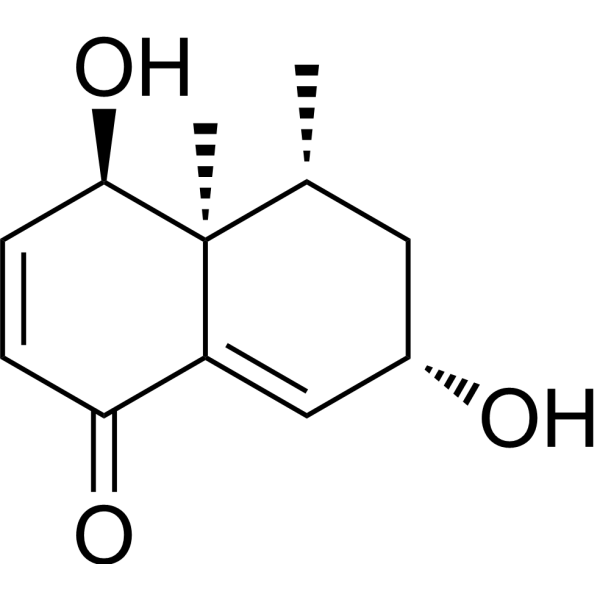
-
- HY-12379
-
|
|
Guanylate Cyclase
|
Inflammation/Immunology
|
|
NS-2028 is a highly selective soluble Guanylyl Cyclase (sGC) inhibitor with IC50 values of 30 nM and 200 nM for basal and NO-stimulated enzyme activity . NS-2028 inhibits soluble Guanylyl Cyclase activity in homogenates of mouse cerebellum and neuronal NO synthase with IC50 values of 17 nM and 20 nM . NS-2028 inhibits 3-morpholino-sydnonimine (SIN-1)-elicited formation of cyclic GMP in human cultured umbilical vein endothelial cells with an IC50 of 30 nM . NS-2028 is commonly used in the research of nitric oxide signaling pathways, it inhibits NO-dependent relaxant responses in non-vascular smooth muscle completely (1 μM) . NS-2028 reduces vascular endothelial growth factor-induced angiogenesis and permeability .
|
-
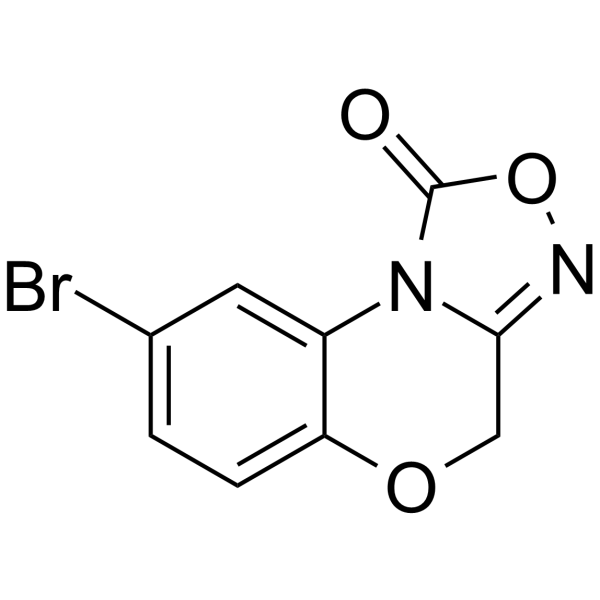
| Cat. No. |
Product Name |
Category |
Target |
Chemical Structure |
-
- HY-N0455
-
-

-
- HY-N0455A
-
-

-
- HY-N0268
-
-

-
- HY-133098
-
-

-
- HY-N6770
-
-

-
- HY-136341
-
-

-
- HY-N6893
-
-

-
- HY-N8444
-
-

-
- HY-N11085
-
-

-
- HY-119720
-
-

-
- HY-N6966
-
-

-
- HY-156241
-
-

-
- HY-N7012
-
|
5-Hydroxy-3',4',7-trimethoxyflavone
|
Galinsoga parviflora Cav.
Flavonoids
Monophenols
Classification of Application Fields
Flavones
Labiatae
Source classification
Phenols
Plants
Disease Research Fields
Inflammation/Immunology
|
TNF Receptor
Interleukin Related
COX
|
|
7,3',4'-Tri-O-methylluteolin (5-Hydroxy-3',4',7-trimethoxyflavone), a flavonoid compound, possesses potent anti-inflammatory effects in LPS-induced macrophage cell line mediated by inhibition of release of inflammatory mediators, NO, PGE2, and pro-inflammatory cytokines. 7,3',4'-Tri-O-methylluteolin significantly induces reduction in the mRNA expressions of inducible nitric oxide synthase and cyclooxygenase-2 .
|
-

-
- HY-17408
-
-

-
- HY-N11996
-
-

-
- HY-N6966A
-
|
|
Source classification
Lactuca perennis
Plants
Compositae
|
Others
|
|
Ethyl trans-caffeate is the trans form of Ethyl Caffeate (HY-N6966). Ethyl Caffeate is a natural phenolic compound isolated from Bidens pilosa. Ethyl caffeate suppresses NF-κB activation and its downstream inflammatory mediators, inducible nitric oxide synthase (iNOS), cyclooxygenase-2 (COX-2), and prostaglandin E2 (PGE2) in vitro or in mouse skin .
|
-

-
- HY-112234
-
-

-
- HY-125863
-
-

-
- HY-17408R
-
-

-
- HY-N0617
-
-

-
- HY-N8936
-
-

| Cat. No. |
Product Name |
Application |
Reactivity |
-
- HY-P80725
-
|
NOS2; NOS2A; nitric oxide synthase; Inducible; Hepatocyte NOS; HEP-NOS; Inducible NO synthase; Inducible NOS; iNOS; NOS type II; Peptidyl-cysteine S-nitrosylase NOS2
|
ICC/IF, WB, IHC-F, IHC-P, ELISA
|
Human, Mouse, Rat |
|
iNOS Antibody is a non-conjugated and Rabbit origined polyclonal antibody about 131 kDa, targeting to iNOS. It can be used for ICC/IF,WB,IHC-F,IHC-P,ELISA assays with tag free, in the background of Human, Mouse, Rat.
|
Your information is safe with us. * Required Fields.
Inquiry Information
- Product Name:
- Cat. No.:
- Quantity:
- MCE Japan Authorized Agent:

























































